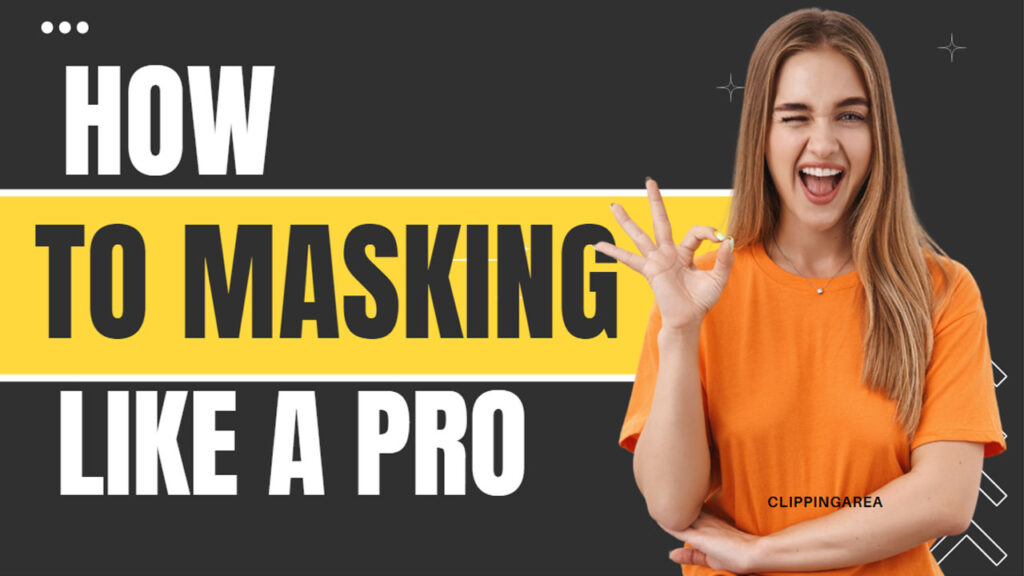Welcome to our Ultimate Guide on Image Masking Services, specifically tailored for fashion businesses and photographers. If you’re wondering, What Is Image Masking Service? – it’s a powerful photo editing technique. This process not only allows you to manipulate images but also enhances the aesthetic appeal of fashion photography.
Photographers and fashion businesses find this tool incredibly valuable. It provides the ability to transform and tailor images, ensuring they align seamlessly with a particular style or theme. As we delve deeper into the world of image masking, exploring its various types, you’ll discover its indispensable role in shaping the visual narrative within the dynamic landscape of the fashion industry.
Understanding Image Masking Services
Image masking is a sophisticated technique in the realm of photo editing and manipulation. It involves the isolation of specific portions of an image for editing, removal, or enhancement, while maintaining the finer details and subtleties within them. This precision ensures that even the most complex subject matters – such as detailed apparel or the intricate strands of hair in a professional model’s portrait – can be extracted from their original backgrounds with utmost accuracy and finesse.
Learn More: How To Edit Wedding Photos In Photoshop Like A Pro
The Art and Science of Image Masking
What separates image masking from basic cut-out editing is the nuanced approach to defining the image’s boundaries. Instead of relying on traditional selection tools, professional maskers employ advanced digital techniques to create impeccably-detailed silhouettes, retaining the softer, more natural textures often found in organic elements within a photograph.
Why Image Masking is Crucial for Your Visual Content
The importance of image masking in today’s digital landscape cannot be overstated. For online storefronts, editorial spreads, and high-concept marketing materials, image masking ensures that the product or subject stands out in the most compelling way possible, crafting a visual narrative that captivates the viewer’s attention immediately.
Learn More: How To Edit Sunrise Photos Like A Professionals
Exploring Types of Image Masking Techniques
Image masking services offer a variety of techniques, each tailored to different kinds of projects and needs. Below are some of the most common masking techniques:
1. Layer Masking
Layer masking enables non-destructive editing by concealing or revealing portions of a layer without permanently removing them. It allows for easy tweaking of the mask’s edge gradients, making it a versatile option for projects with more fluid shapes.
2. Alpha Channel Masking
Alpha channel masking is ideal for isolating objects with clear, solid edges against transparent backgrounds. It saves the selection data in a separate channel, which can then be translated into any software that supports the alpha channel.
3. Hair Masking
Hair masking is specifically designed to handle the intricate details of hair or fur, ensuring a clean separation from complex and busy backgrounds. This advanced technique demands patience and expertise to achieve lifelike strands and cutouts.
4. Transparent Masking
Transparent masking deals with subjects that include glass, smoke, and flames. It retains the translucent quality of these elements while removing the background, maintaining their inherent characteristics without a halo effect.
5. Collage Masking
Collage masking involves the compositing of multiple images into a single, coherent piece. It requires fine control and precision in merging the different elements seamlessly, often for projects such as digital art or advertisement layouts.
Learn More: How To Edit Headshots In Photoshop
Applications of Image Masking in Diverse Industries
From the runway to the consumer’s screen, image masking services are integral to numerous industry verticals, serving a wide array of purposes and outcomes. Let’s explore how image masking is being harnessed across different domains.
E-commerce Product Photography
In the competitive e-commerce landscape, high-quality product images can make all the difference. Image masking ensures that items are presented with clarity and focus against various backgrounds, fostering a professional and uniform brand image.
Fashion and Beauty Industry
The meticulous nature of image masking is a boon for the fashion and beauty sectors. It allows for the isolation of garments, accessories, and makeup products with precision, showcasing intricate design elements and textures that are part and parcel of these industries.
Advertising and Marketing Campaigns
In marketing, the message needs to be crystal clear. Image masking brings this clarity to life by highlighting the intended subject matter against a backdrop that enhances the overall campaign’s theme or messaging.
Graphic Design and Digital Art
For graphic designers and digital artists, image masking is a cornerstone of creative freedom. It facilitates the manipulation and combination of visual elements to produce compelling, unique artwork that resonates with audiences.
Photo Retouching and Restoration
In the realm of photo retouching and restoration, image masking is used to correct, enhance, and revive photographs without damaging the original content. It’s a valuable tool for both modern digital retouching and classic print restoration work.
Learn More: How To Create Smoke In Photoshop: 5 Easy Ways
The Benefits of Professional Image Masking
The advantages of leveraging a professional image masking service are multifaceted and consequential. Let’s delve into the benefits that such services offer to businesses and photographers alike.
Precise and Accurate Image Cutouts
The primary benefit of image masking is its ability to deliver cutouts that are exceptionally precise and accurate, even around the most intricate of object details. This level of detail ensures that the edited images appear natural and seamless.
Seamless Integration into Different Backgrounds
The refined edge quality and detailing in masked images enable them to blend effortlessly into various backgrounds. This versatility allows for dynamic visual presentations in a range of contexts and platforms.
Retaining Fine Details and Intricate Edges
Image masking preserves the subtle nuances and fine details of the subject matter, be it the texture of a fabric or the intricacy of a design pattern. This meticulous approach results in a full, faithful representation of the original content.
Enhancing Image Quality and Aesthetics
By isolating and editing specific areas of an image, masking can enhance the overall visual appeal and quality. It allows for targeted adjustments to color, lighting, and other elements, promoting a polished and professional look.
Saving Time and Effort in Post-Processing
Outsourcing image masking to professionals with the right expertise and tools can significantly reduce the post-processing workload. This time-saving practice allows businesses to focus on core activities while still delivering top-tier visual content.
Tools and Software for Image Masking
A variety of software tools are available to perform image masking, each with its unique features and learning curves. Here are some popular choices among professionals in the field.
Adobe Photoshop
As a powerhouse of photo editing, Adobe Photoshop leads the pack with its robust suite of masking tools, including the quick selection tool, refine edge tool, and layer and channel masks.
GIMP
An open-source alternative to Photoshop, the GNU Image Manipulation Program (GIMP) offers a comprehensive set of tools for image masking, suitable for those on a budget or who prefer open-source solutions.
CorelDRAW
CorelDRAW, often associated with vector graphics, also provides a set of tools for masking within its application. It’s a robust option for graphic designers who work across a range of visual media.
Pixlr
Pixlr caters to users who prefer an online platform for their image masking needs. It’s a user-friendly editor with tools that are well-suited for basic to moderate-level masking work.
Fotor
Fotor offers a range of photo editing features, including a masking tool that is ideal for those new to the technique or looking for a more intuitive, guided experience.
How to Do Image Masking Step by Step
Navigating the image masking process can be complex, but a structured approach can streamline the workflow:
Selecting the Appropriate Masking Technique
The type of subject and its surrounding environment dictate the choice of masking technique. Understanding the nuances of each method is key to making an informed selection.
Opening the Image in Editing Software
Once the technique is determined, the editing software is opened, and the necessary preliminary adjustments, such as color correction, can be made before the masking process begins.
Creating a Mask Layer or Channel
Using the selected technique, a mask layer or channel is generated to isolate the subject matter. This step sets the foundation for the more detailed work that follows.
Refining the Mask with Brushes and Tools
Precision is paramount when refining the mask. Professional editors use a combination of brushes, erasers, and other tools to work with varying opacities and carefully delineate the subject’s edges.
Making Accuracy Checks and Adjustments
After the initial refinement, it’s crucial to zoom in and review the mask’s quality. Minor adjustments will likely be needed to ensure that the cut-out appears natural and seamless.
Challenges and Solutions in Image Masking
Sometimes, the path to a well-masked image is fraught with challenges that require ingenuity and skill to overcome. Here’s a look at common hurdles and how to address them.
Dealing with Complex and Detailed Images
For complex and detailed images, there is no one-size-fits-all solution. A combination of masking techniques, such as using layer masks in conjunction with alpha channel masking, can provide the necessary precision and versatility.
Tackling Fine Hair and Fur
Masking fine hair and fur is a delicate endeavor. The solution often involves utilizing layer masks and employing custom brushes with soft edges to mimic the natural flow and texture of the subject’s hair.
Working with Transparent or Translucent Objects
To preserve the look of transparent or translucent objects, dedicated tools within image editing software allow for the isolation of these elements without losing their characteristic properties.
Addressing Reflections and Shadows
Handling reflections and shadows requires meticulous attention to detail. Techniques like selective color adjustments and manual painting can help maintain their presence while ensuring a clean separation from the background.
Achieving a Seamless Blend with Different Backgrounds
To integrate masked images into a new background, color matching, light adjustments, and shadow creation are often necessary. Proximity to the light source and environmental elements play a crucial role in crafting a convincing composite.
Choosing a Professional Image Masking Service Provider
Selecting the right image masking service provider can be a critical decision. Here are factors to consider when making your choice.
Experience and Expertise in Image Masking
Look for service providers with a proven track record and a team of skilled professionals adept at handling various masking techniques across different industries.
Portfolio and Client Testimonials
A robust portfolio and positive client testimonials are indicative of a service provider’s capability and the quality of work you can expect to receive.
Turnaround Time and Pricing
Balancing quality with turnaround time and pricing is essential. Be clear about your project’s timeline and budget, and ensure the service provider can accommodate your needs without compromising on the final product.
Communication and Output
Effective communication ensures that your vision is understood and translated accurately in the final output. Clear lines of communication and a cohesive workflow are paramount to a successful partnership with your image masking service provider.
In conclusion, image masking is a powerful tool that can elevate the visual content of any fashion business or photography project.
By mastering the techniques and understanding the process, professionals can harness the transformative capabilities of image masking to present their brand, products, and art in a compelling and sophisticated manner.
Embrace the potential of image masking services, and unlock a world of visual storytelling that resonates with your audience and furthers your creative vision.




